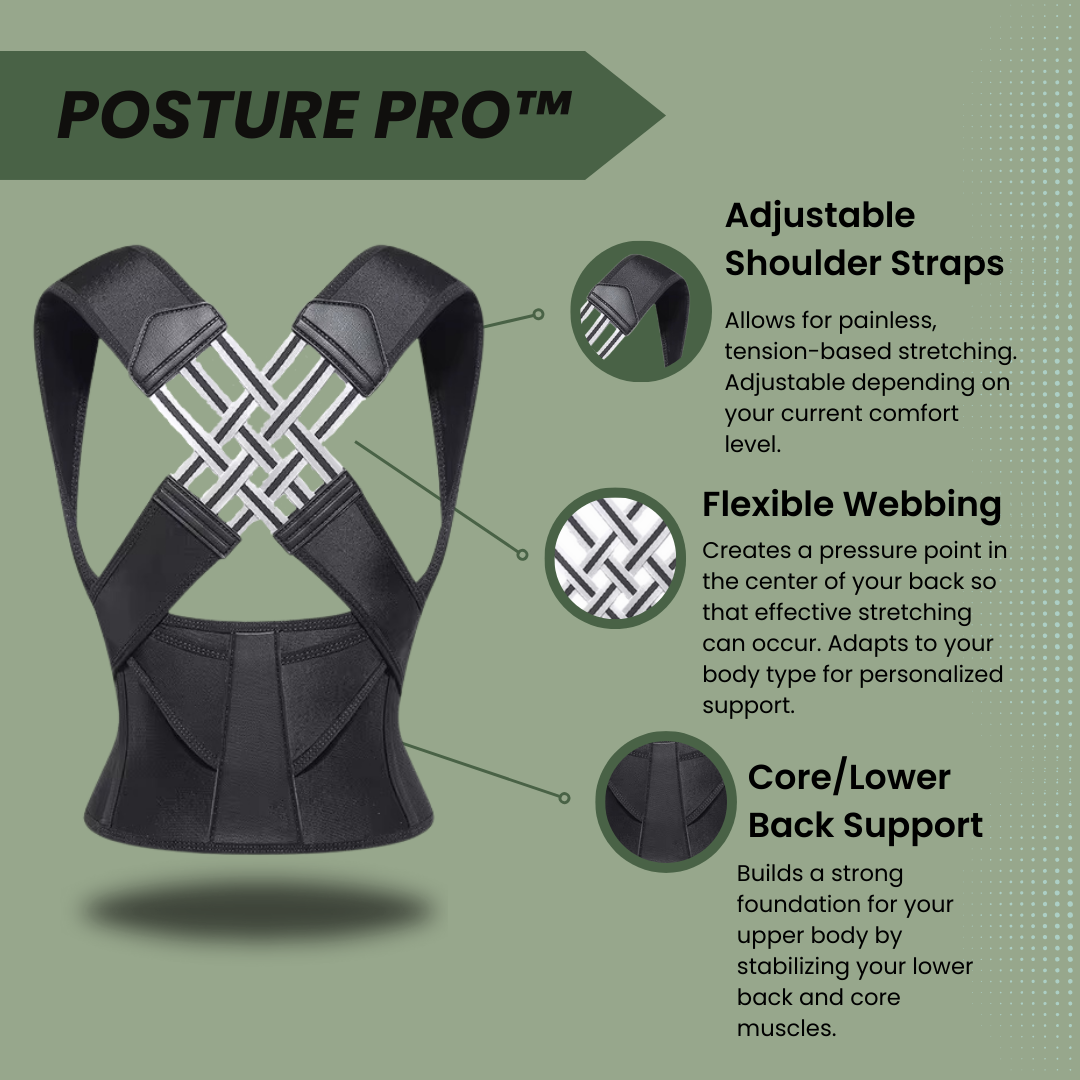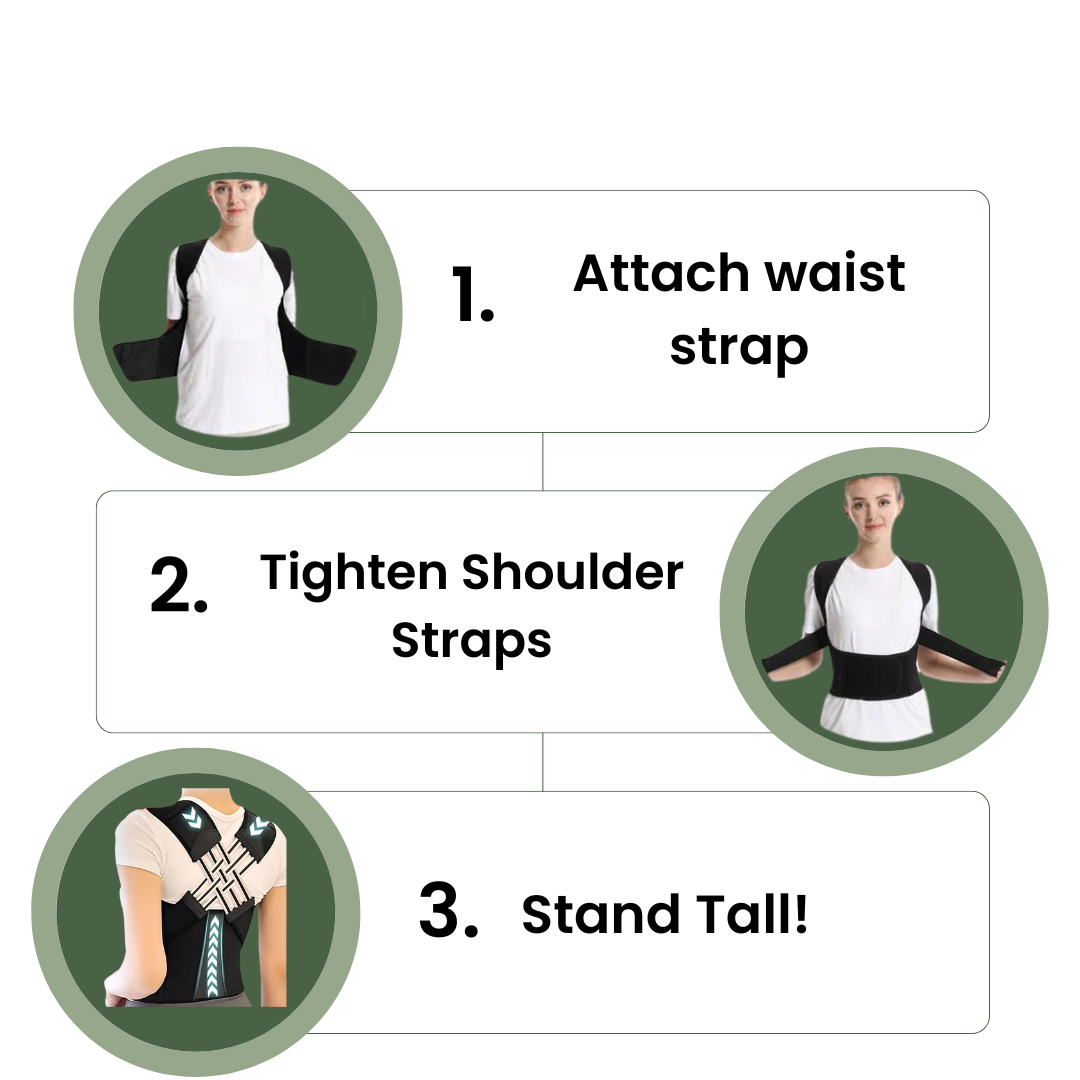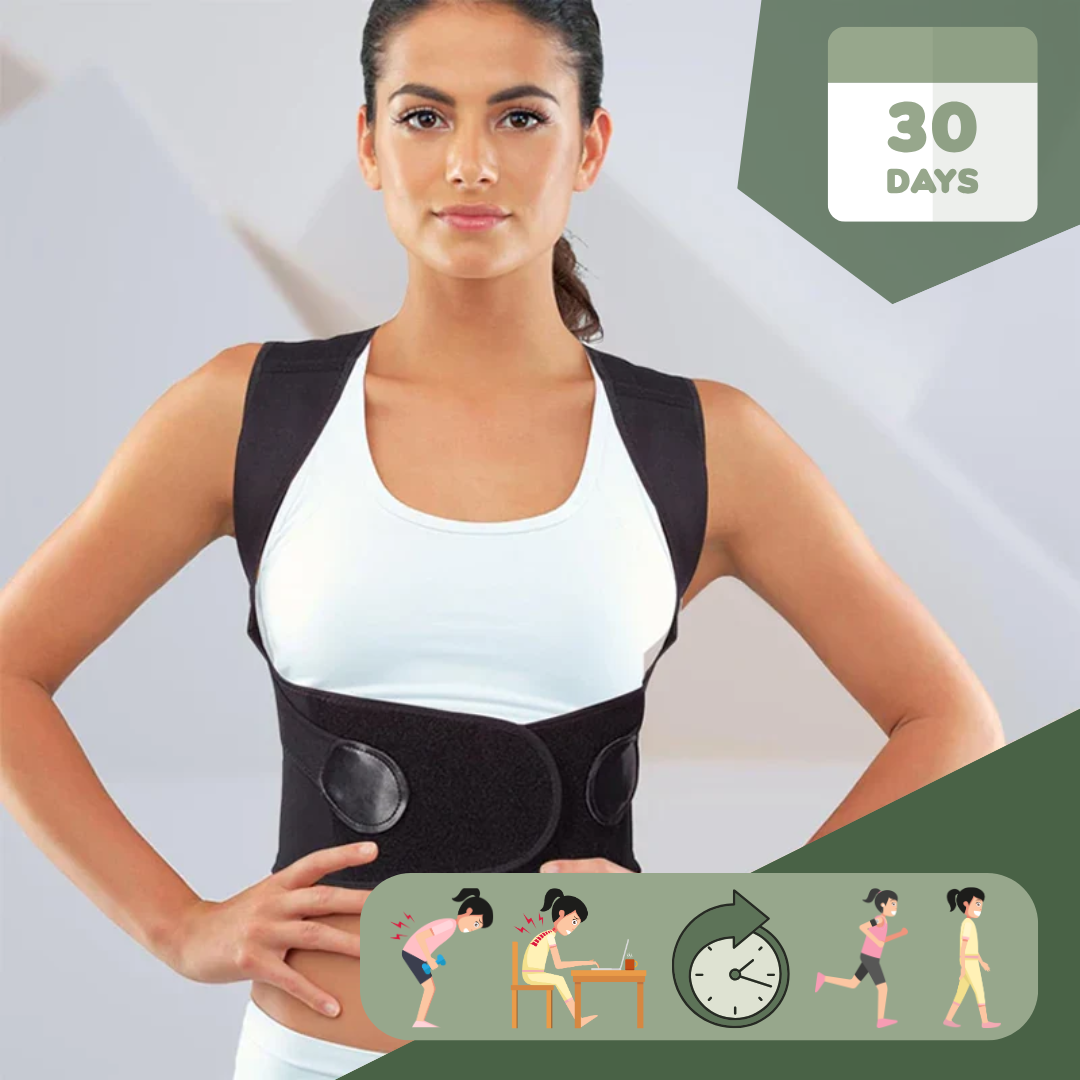Many people spend hours sitting at work, leading to poor posture. Standing desks have shown significant benefits in maintaining posture. This article will explore the role of standing desks in maintaining posture and how they can boost your overall health.
Keep reading to learn more.
Key Takeaways
- Standing desks improve posture and reduce back pain by promoting proper spinal alignment. This leads to a healthier work environment.
- Using a standing desk can enhance heart health since standing burns more calories than sitting, reducing the risk of heart disease.
- Switching between sitting and standing at a desk encourages movement. This reduces sedentary behavior and increases energy levels.
- Proper setup and use of standing desks, including adjusting the height for elbows and screen for eye level, are crucial for maximizing benefits.
- Consulting healthcare professionals and creating ergonomic workstations support better posture and overall health when using standing desks.
Benefits of Using a Standing Desk for Posture
Standing desks offer significant advantages for posture. They help improve spinal alignment and reduce back pain, leading to a healthier work environment.
Improved heart health
Using a standing desk can greatly enhance heart health. Studies show that standing burns more calories than sitting, even in a stationary position. By using a standing desk for three hours, you can burn an extra 24 calories.
This small change reduces the risks of heart disease and other health problems linked to prolonged sitting.
Improved posture while using a standing desk also contributes to better circulation. Proper spinal alignment decreases pressure on the cardiovascular system. As your body stays active, it helps maintain healthy blood flow and overall well-being.
Good posture leads to better heart health.
Reduced sedentary behavior
Standing desks actively reduce sedentary behavior by encouraging movement. People who use these desks stand more often, breaking up long periods of sitting. Standing burns more calories than sitting, even if you stay still.
For instance, standing for three hours can burn an extra 24 calories. This increase in activity helps combat the risks associated with prolonged sitting.
Using a standing desk keeps your muscles engaged and promotes better circulation. It helps lower feelings of stress and fatigue while boosting mood and energy levels. Overall health improves as individuals remain active throughout their workday.
The advantages of standing desks for posture become clear when considering how they influence daily habits and overall productivity enhancement while reducing physical strain on the body.
Enhanced work performance
Using standing desks can boost work performance. They improve focus and cognitive function. Research shows that better posture enhances overall efficiency at work. Standing while working can increase energy levels and reduce feelings of stress and fatigue.
People who switch between sitting and standing often perform better on tasks. An adjustable desk allows individuals to maintain proper posture, reducing strain on the neck, shoulders, and back.
Standing also burns more calories than sitting does. In fact, three hours of standing can burn an extra 24 calories compared to sitting still. With improved circulation from using a standing desk, workers may experience fewer health risks associated with prolonged sitting like heart disease or diabetes.
This active working posture promotes not only physical well-being but also mental agility in the workplace.
Reduced musculoskeletal issues
Standing desks significantly reduce musculoskeletal issues. They help maintain proper posture, which lessens strain on the neck, shoulders, and back. Improved ergonomics with a standing desk can lead to better body alignment.
This alignment reduces discomfort during long work hours.
Also, standing while working improves circulation. Enhanced blood flow decreases the risk of physical stress on the body. Studies show that switching between sitting and standing helps keep muscles engaged and active throughout the day.
Ultimately, these factors contribute to overall health benefits of standing while working.
Tips for Using a Standing Desk

To get the most out of your standing desk, switch between sitting and standing regularly. Use a cushioned mat to ease pressure on your feet. Take breaks often to stretch and move around.
Adjust the desk height so that it suits your body perfectly.
Alternate between sitting and standing positions
Alternating between sitting and standing positions benefits your posture significantly. Standing desks allow you to shift from one position to the other easily. This change helps reduce physical stress on the body.
It can also enhance focus and cognitive function throughout the day. Studies show that using a standing desk for three hours burns an extra 24 calories compared to sitting. By incorporating both positions, you lower feelings of stress and fatigue while boosting your mood and energy levels.
Proper use of a sit-stand desk encourages regular movement, which is essential for good health. Prolonged sitting poses serious risks, like heart disease and diabetes. Using adjustable standing desks enables easy height adjustments according to your needs.
Getting into this habit promotes better circulation too. Overall, switching between these two postures supports health improvements along with posture enhancement at work.
Use a cushioned mat
A cushioned mat can significantly enhance your experience when using a standing desk. It reduces physical stress on the body and keeps you active. Standing on a hard surface for long periods may cause discomfort or fatigue.
A cushioned mat helps alleviate this strain, allowing you to maintain proper posture without excessive discomfort.
Improving posture becomes easier with comfort underfoot. With proper ergonomics and the right support from a mat, you can reduce neck, shoulder, and back strain. Investing in a quality cushioned mat not only boosts your comfort but also benefits your overall health while working at your standing desk.
Take regular breaks
Taking regular breaks is essential for maintaining good posture while using a standing desk. Breaks help reduce physical stress on the body. They also give your muscles a chance to relax, preventing strain in your neck, shoulders, and back.
Studies show that standing for three hours can burn an extra 24 calories compared to sitting. Regular intervals of movement improve circulation and lower health risks linked to prolonged sitting.
Incorporating brief moments away from your desk can enhance focus and cognitive function as well. Even short walks or stretches can lift your mood and energy levels significantly. Keep this practice consistent while enjoying the benefits of alternating between sitting and standing postures at work.
Properly adjust desk and computer screen height
Adjusting your desk and computer screen height is crucial for maintaining good posture. Set your desk at elbow height. Keep your wrists straight while typing. Ensure that the top of the computer screen sits at or slightly below eye level.
This adjustment allows you to view the screen comfortably without straining your neck.
Proper ergonomics with a standing desk can greatly improve posture and reduce strain on the neck, shoulders, and back. Standing desks aid in weight management by helping burn more calories than sitting.
For instance, using a standing desk for three hours burns an extra 24 calories daily. Prioritizing these adjustments enhances overall health and boosts focus during work tasks.
Proper Standing Desk Posture
Maintaining proper standing desk posture promotes better spinal alignment. Ensure your desk height allows your elbows to rest at a 90-degree angle while typing.
What is proper standing desk posture?
Proper standing desk posture involves aligning your body to prevent strain. Keep your feet flat on the ground, shoulder-width apart. Distribute your weight evenly on both legs. Your knees should remain slightly bent without locking them.
Position the top of your computer screen at eye level to avoid neck strain.
Elbows should be close to your body and form a 90-degree angle while typing. Use an adjustable standing desk for optimal height settings. This setup can improve circulation and reduce the risk of health issues related to prolonged sitting.
By maintaining proper posture, you lower physical stress on your neck, shoulders, and back, promoting overall health with standing desks.
Standing desk height adjustment
Adjusting the height of your standing desk is crucial for maintaining proper posture. The right height can reduce strain on your neck, shoulders, and back.
- Stand with your feet flat on the floor. Your knees should be at a 90-degree angle.
- Position the desk so your elbows remain close to your body. Elbows should also bend at around 90 degrees.
- Ensure your computer screen is at eye level. This helps prevent neck strain from looking up or down.
- Keep your wrists straight while typing. Wrists should not be bent up or down.
- Adjust the monitor distance to about an arm's length away. This reduces eye strain during prolonged use.
- Use adjustable furniture if you share the workspace with others. Sharing ensures everyone can find their ideal comfort zone.
- Regularly reassess and adjust your standing desk height as needed. Changes in comfort levels can signal a need for adjustments.
Proper standing desk height adjustment plays a vital role in posture improvement with standing desks, promoting both productivity and health benefits at work.
Choosing the right standing desk chair
Choosing the right standing desk chair is crucial for maintaining good posture. A good chair supports your back, neck, and shoulders. This support helps reduce physical strain on your body while you work.
Proper ergonomics at a standing desk can minimize discomfort in these areas.
Look for chairs that adjust easily to fit your height and workspace. The right chair keeps you comfortable while alternating between sitting and standing positions. Standing desks improve circulation and reduce health risks associated with prolonged sitting.
A well-chosen chair complements this benefit by enhancing overall comfort during work hours.
Recommendations for Better Posture at Work
Take breaks frequently to refresh your body and mind. Listen closely to what your body tells you. Create an ergonomic workstation that supports your posture. Consult a healthcare professional for personalized advice on improving comfort at work.
For more insights, keep reading!
Take breaks frequently
Frequent breaks play a vital role in maintaining good posture. Standing desks let you alternate between sitting and standing positions, which can help reduce physical stress on the body.
Regularly stepping away from your desk lowers feelings of stress and fatigue while also improving mood and energy levels. Standing burns more calories than sitting, even if you simply stand still.
Using a standing desk for three hours burns an extra 24 calories.
Listen to your body's needs during work hours. Short breaks improve circulation and lower health risks linked with prolonged sitting. Taking time away from the screen reduces musculoskeletal issues as well.
Frequent breaks enhance focus, cognitive function, and overall efficiency with standing desks in the office environment.
Listen to your body's needs
Your body gives you signals. Pay attention to them. If you feel tired or sore, change your position. Standing desks can help with this. They allow you to switch between sitting and standing easily.
This movement can reduce physical stress on your body.
Standing for long periods without a break may also cause discomfort. Remember, listening to your body's needs means taking breaks often. Make adjustments as needed at your standing desk for comfort and support.
With proper ergonomics, standing desks can improve posture while reducing strain on the neck, shoulders, and back. Always prioritize what feels best for your health and well-being while using a sit-stand desk.
Consider an ergonomic workstation
An ergonomic workstation greatly contributes to better posture. Proper ergonomics with a standing desk can reduce strain on the neck, shoulders, and back. It allows you to maintain proper posture while working.
With good design, a standing desk can help improve circulation and decrease health risks associated with prolonged sitting.
These adjustments aid in weight management and lower feelings of stress and fatigue. Standing burns more calories than sitting does, even during simple tasks. Using a standing desk for three hours can burn an extra 24 calories.
Overall, an ergonomic setup enhances focus, cognitive function, and work efficiency.
Consult a healthcare professional for personalized advice.
Consulting a healthcare professional can provide valuable insights for maintaining good posture with a standing desk. These experts can assess your unique needs and recommend adjustments based on your specific situation.
Standing desks help improve overall health by reducing physical strain on the body. They also enhance focus, cognitive function, and efficiency at work.
Personalized advice can ensure you make the most of using adjustable standing desks. Healthcare professionals understand how prolonged sitting risks affect individuals differently.
Their guidance may include tips for proper ergonomics to reduce strain on the neck, shoulders, and back while using a standing desk effectively.
FAQs
1. What is the role of standing desks in maintaining posture?
Standing desks play a significant role in maintaining posture by reducing physical strain on your spine, which can improve overall work health.
2. How do standing desks contribute to overall health improvement?
The use of sit-stand desks can lead to better postural habits, thus reducing the risk of back pain and other related health issues, thereby improving your overall wellbeing.
3. Can an adjustable standing desk offer additional benefits for my posture?
Yes, using an adjustable standing desk allows you to change positions throughout the day which helps maintain good posture and reduce stress on your spine.
4. Do you have any tips for maintaining good posture with a standing desk?
Sure! It's essential to adjust the height of your desk correctly so that your screen is at eye level and keep your feet flat on the floor while working.



















